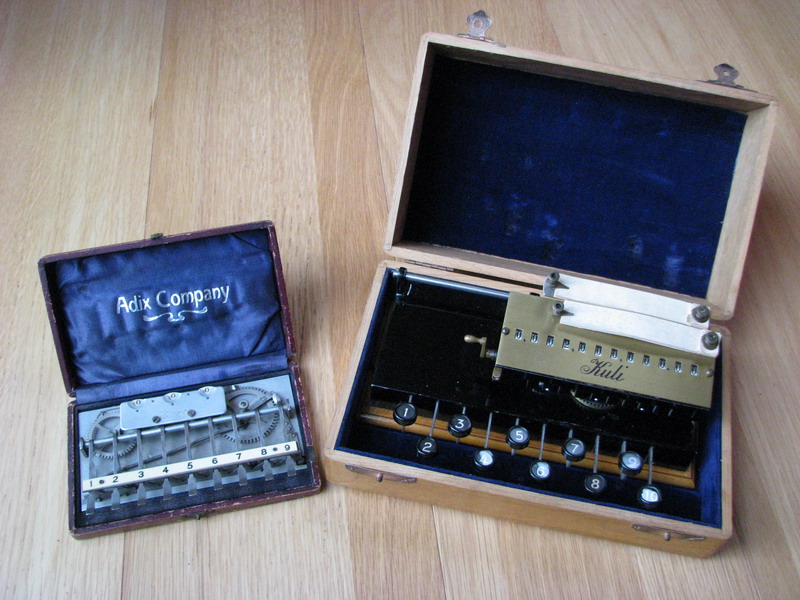Adix I & Kuli
I had the Adix for quite a few years, even though it didn't really fit into the collection, because it is a column adder and not a four-function calculator. It has some charm to it though, and since it is the very first model, without reset lever and with the smaller gear on the left, it is so deliciously unpractical that it is a complete mystery to me why it ever sold at all - or why anyone would buy one, rather. Interestingly, from the patents it appears that its key selling point was that it was noiseless. Imaging summing a row of numbers on a Dalton machine, and you would probably see why this might be perceived as important. On the other hand, the Dalton added several columns at once and gave you a printout too ...
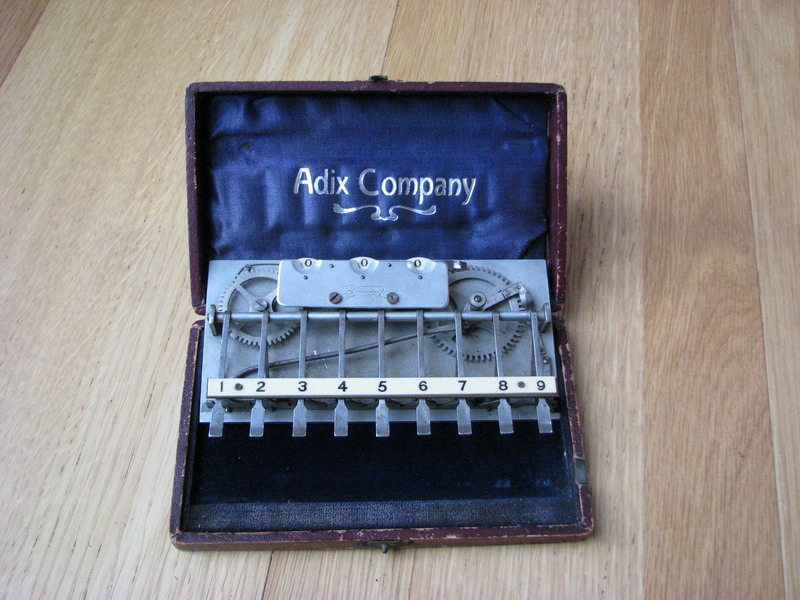
It came in its original faux-leather box, which is a bit tatty, with the typical very blue velvet and satin inside which was a bit dirty, but it is complete and it works.
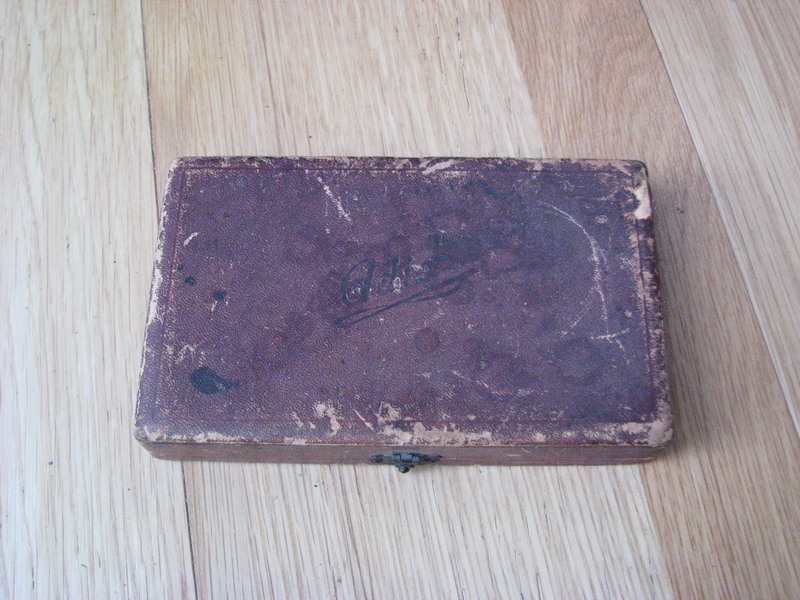
Some more pictures:
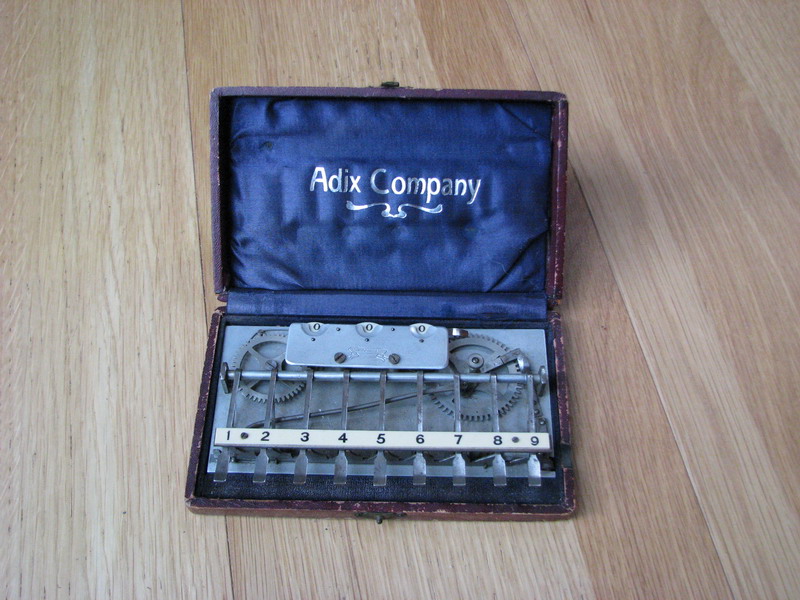

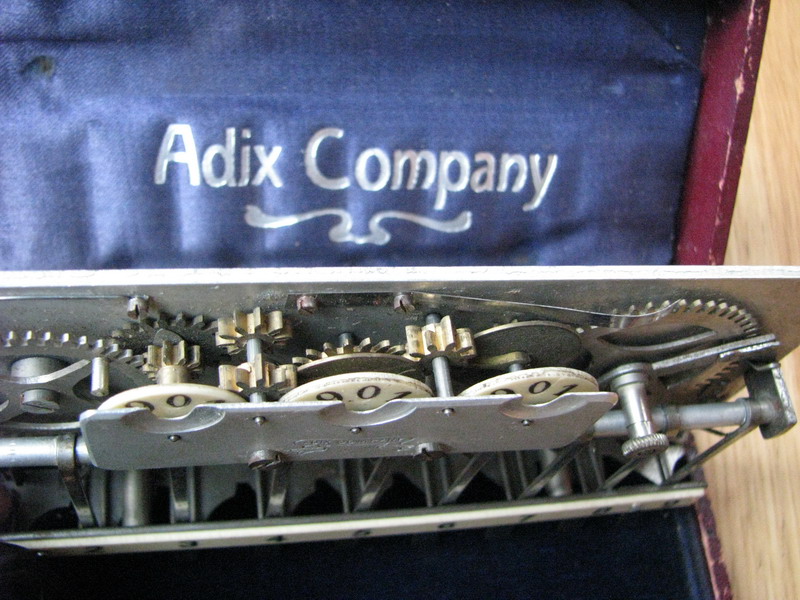
Prior to selling it, I decided to clean it up and make sure it functioned correctly - one of the guide wires for the 9 key was missing, which caused the machine to miscalculate often. You will probably agree with me that it looks much better now.
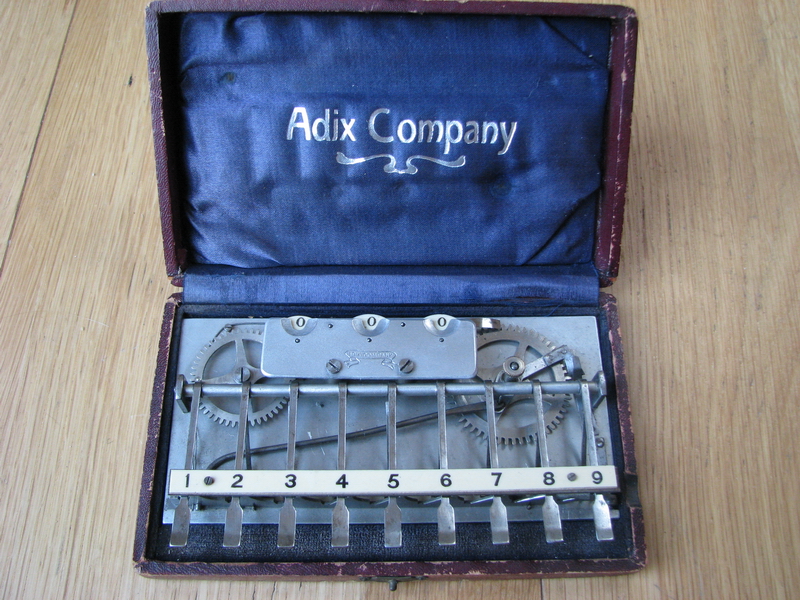
The Adix was first brought out in 1903 by the Adix company from Mannheim with Pallweber & Bordt as the owners. Incidentally, this is the same Austrian Josef Pallweber who was succesful in the 1880's with early digital clocks. As interest waned, he started searching for new ways to stay in business, and patents for cash registers and the Adix and its improvements start appearing from 1898 on. By 1911, the patents shift focus to alarmed portable cash boxes, and we can only assume that he succeeded in making a living from those as well. The company owner changing to Adolf Bordt only seems to indicate that Pallweber was bought out or simply left. Bordt continued patenting a printing adding machine, and probably also built and marketed it after 1909 - but none survive to the best of my knowledge. By 1912 Bordt was in Leipzig establishing Bordt & Behrens, to build full-keyboard adders ("Adma") after the war. What happened to the production of the Adix at this time isn't really clear, but "the Adix company" apparently kept building and selling them into the 1920s.
Even though the Adix machines weren't practical at all, certainly not in the beginning, enough machines were sold to set about improving the mechanism, adding a zeroing lever, after which sales really took off, even though the machine still wasn't very practical. In the 1920's, when production and marketing was taken over by one of the suppliers for turned parts, Johann Zähringer in Schönenbach, who made and marketed them in their various guises well into the 1950s. Thanks to Jaap Scherphuizen for that bit of information.
Pallweber & Bordt had been thinking hard about improving the lowly Adix, and after three more years of development, they came up with the Diera, which was essentially an Adix with a mechanical memory on the righthand side, in order to tally the column results instead of writing them down. Judging from the price asked for these machines today, sales were not brilliant either, and unfortunately the metal block used for the mechanical memory was made out of a zinc alloy that would crack and distort horribly with time, so hardly any of these machines can be found working today. I do have one, but it needs a new memory block machined, and I'm still working on that.
Finally, Pallweber & Bordt had their stroke of genius - they would improve the Adix further, by replacing its lowly three result wheels with a moveable carriage, in order to be able to do large sums directly, without resorting to writing the intermediate results down on paper, and even multiplications. Also incorporated would be a handy reset lever for the carriage, sturdy metal construction, precise machining and an attractive brass top plate. In short, a calculating instrument of quality for the discerning gentleman. Unfortunately, discerning gentlemen either used a serious calculator or weren't interested in sums alltogether, so the machine was an expensive failure. Not many were sold.
Nevertheless, I managed to find one, and for an affordable price too. Given its condition, I couldn't pass up on it, even considering that it does not really fit into my collection.
I did some very light restoration to the Kuli, with respect for its patina - one keytop shroud and its corresponding glass disc (but luckily not the cardboard with the number!) were missing and had to be replaced. I also filled in some of the flaked-off black paint, blended it in with the existing paint, and other than that only gave it a good cleaning. The hardest part about restorations is sometimes to produce a finish which is not ostensibly better than the original one - the original coat of paint is very thin and reproduces every fault in the casting perfectly - as soon as you start sanding the touched-up bits, you suddenly end up with shiny smooth, flat new paint that looks much better!
The machine is heart-breakingly original and complete, down to the paper strips on the top, only about 20 of which have been used. I was told it spent its life in an old lady's cupboard in Sweden, and obviously all of it inside its box. The oak box also needed attention by a specialist in wood conservation and restoration, and after some of the edges were reglued, and splits in the wood filled in, it looks fantastic. Again, the restoration was done with respect for the original finish.
The machine has been sold in the mean time, so there is only the eye candy below left to enjoy :
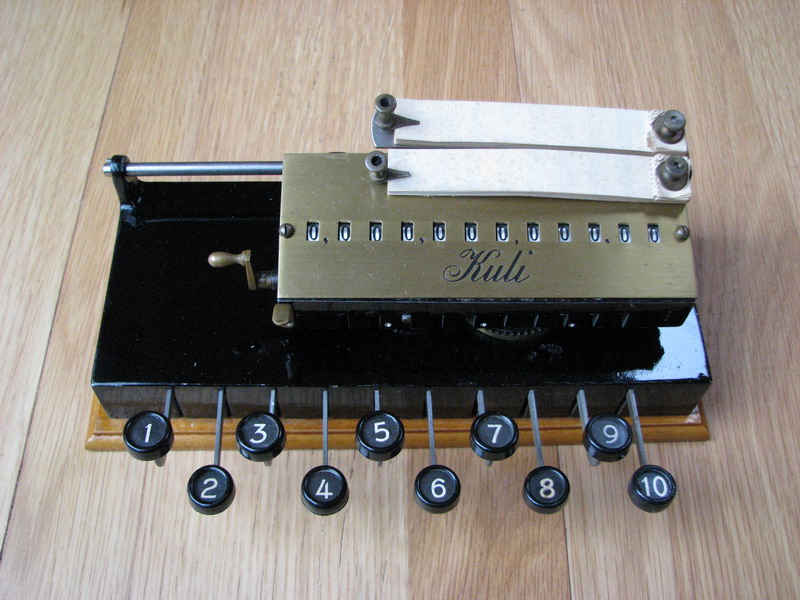
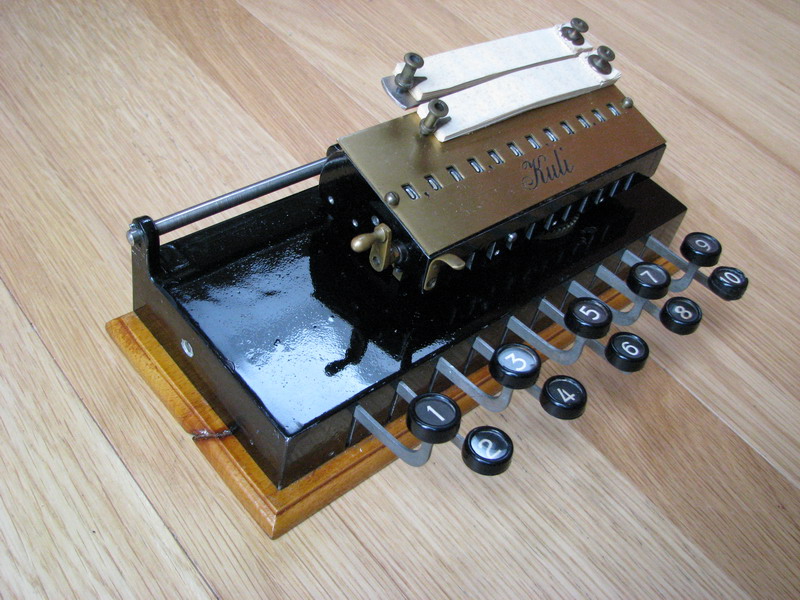
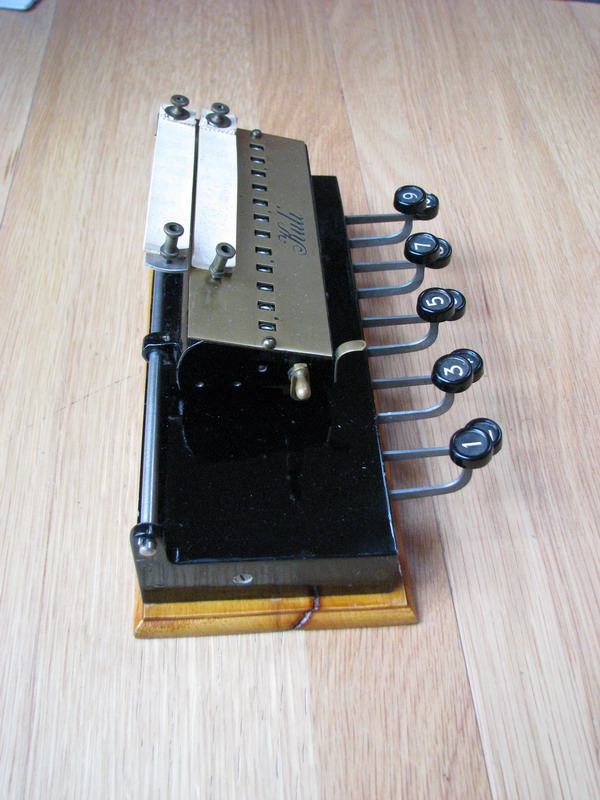
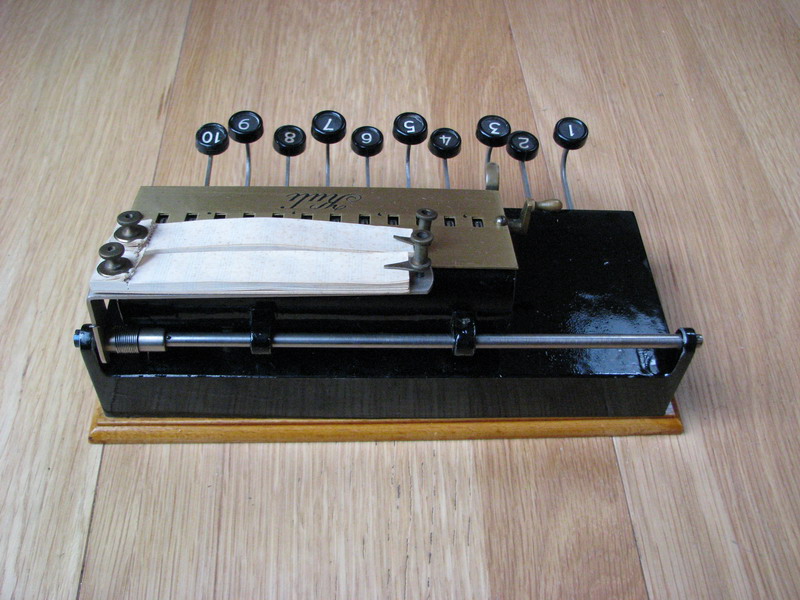
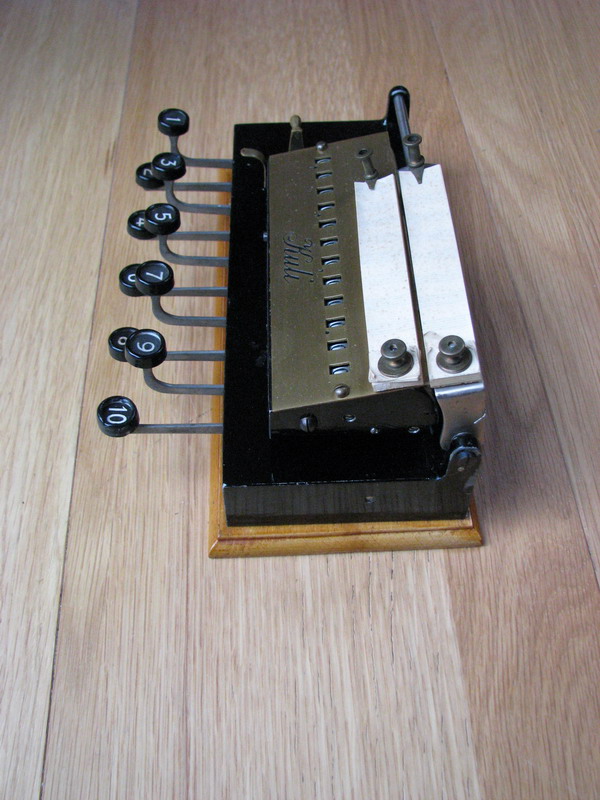
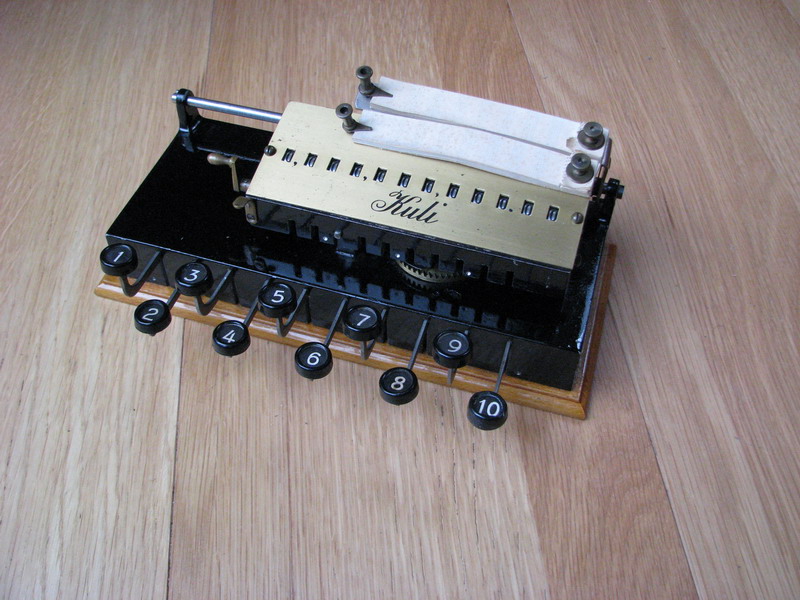
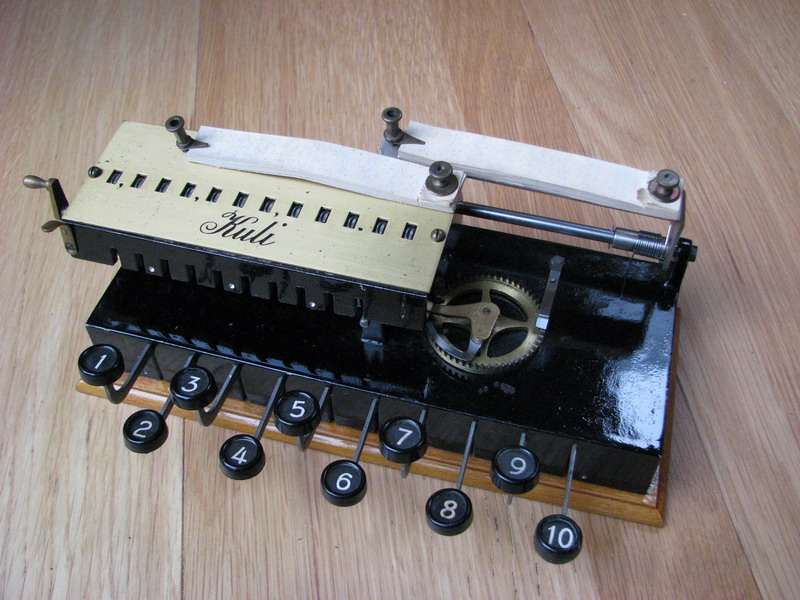
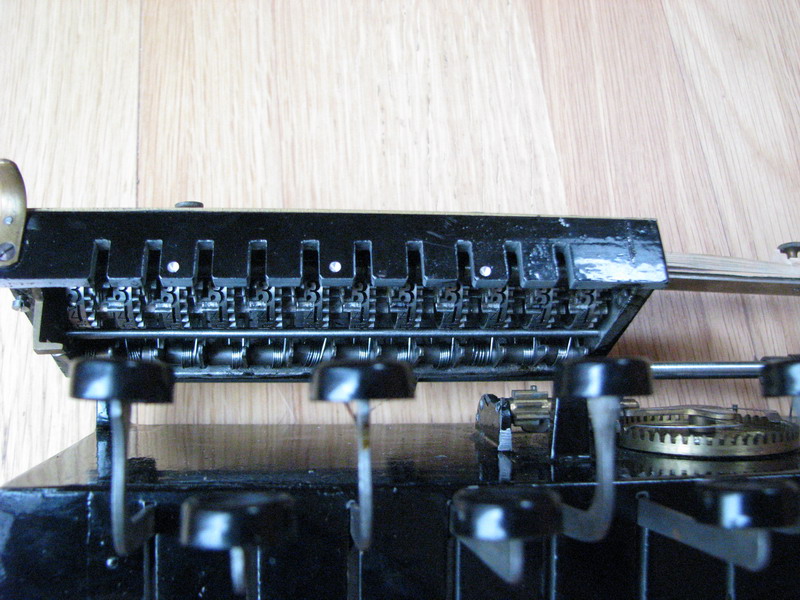
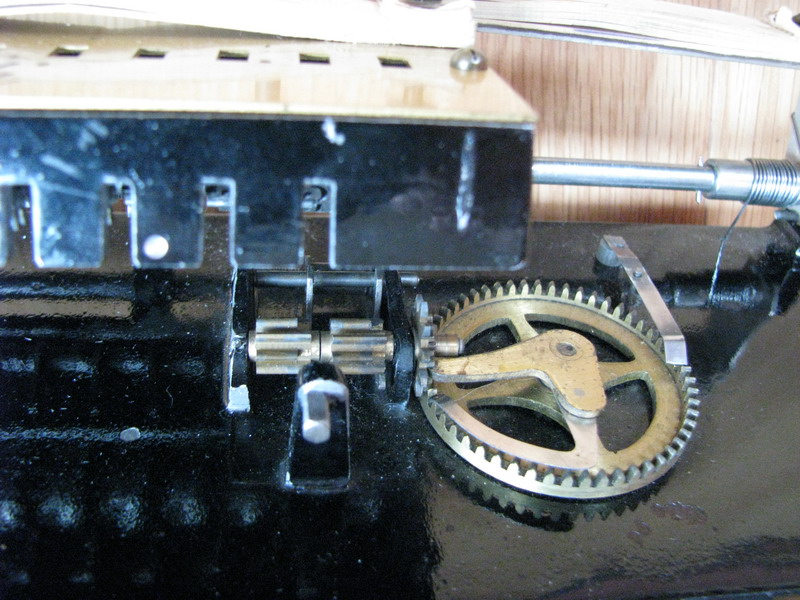
Its serial number is 509 (stamped on the base), and I was told at one point that the series started with 500, but I was also told this is not true, and that machines with serial numbers in the 300 and even the two digit range of serial numbers do exist. There is a later model Kuli which includes an extra unmarked key on the right side of the keyboard, which I suspect is an automatic carriage shift key. This machine doesn't yet have that refinement - you need to lift and shift the carriage manually.

What is even better - it came with its original oak box with purple-blue velvet lining, which is now back to perfect condition.
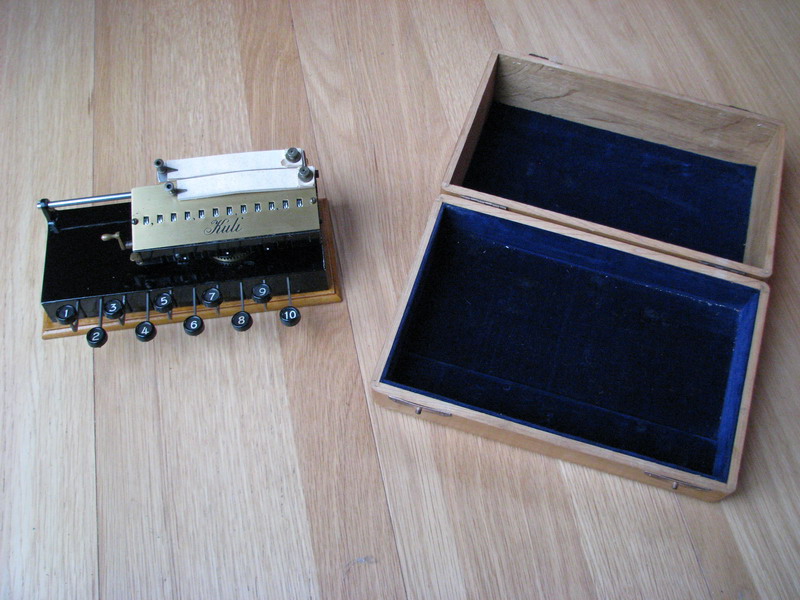
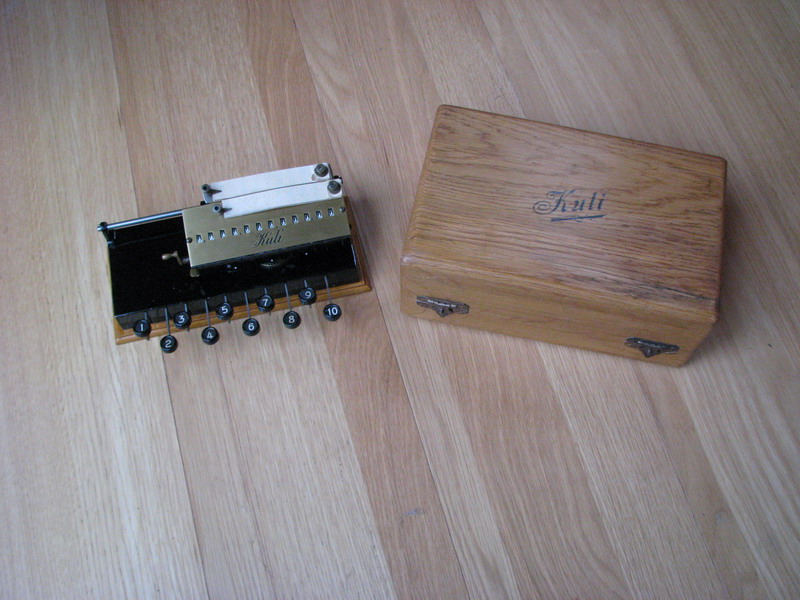
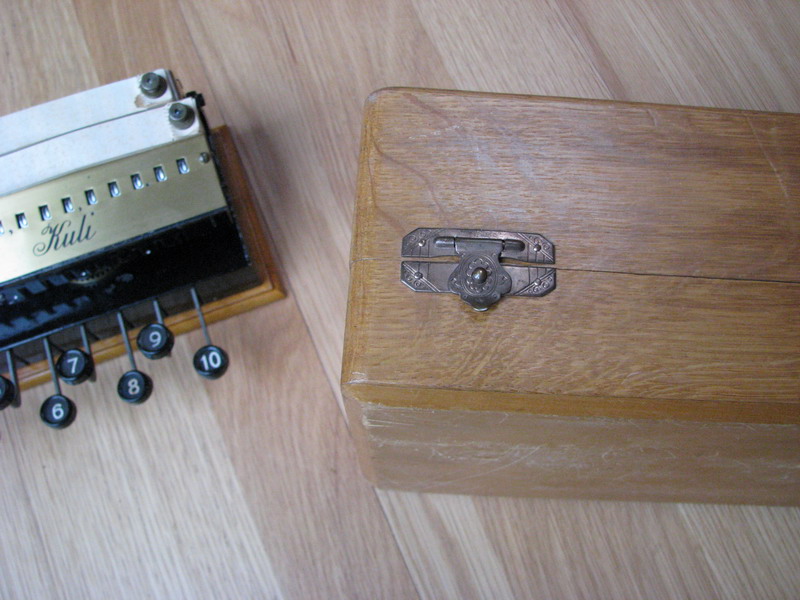
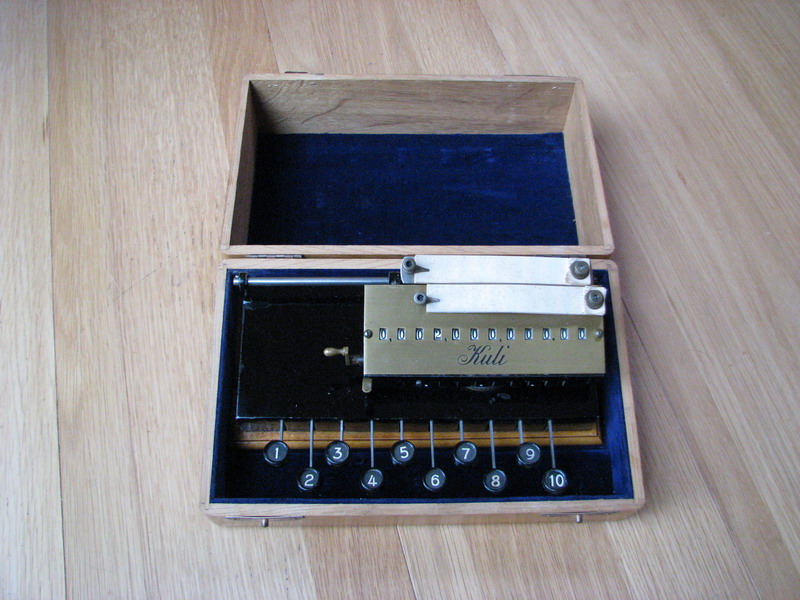
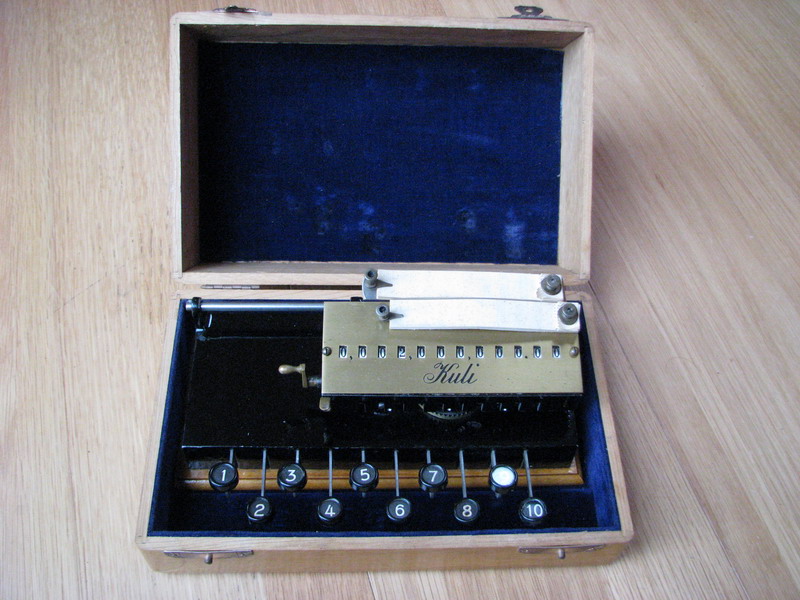
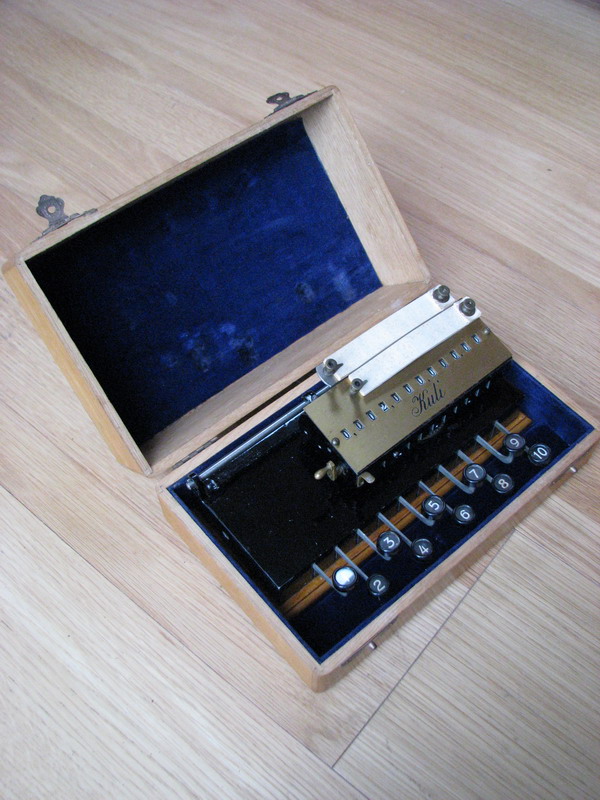
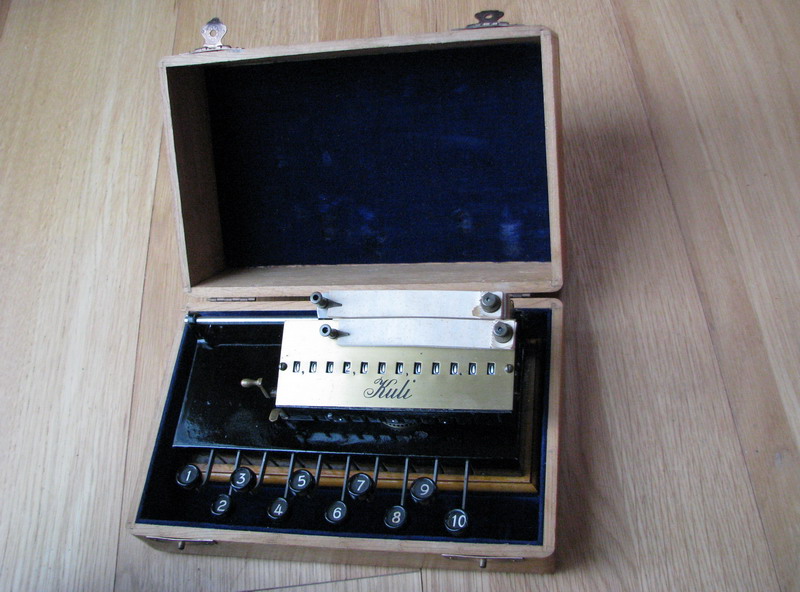
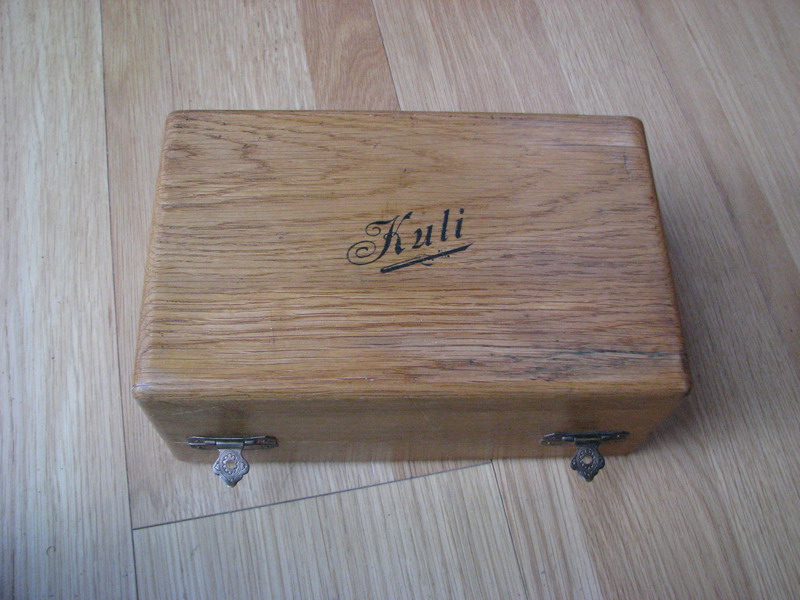
And finally, a family portrait:
